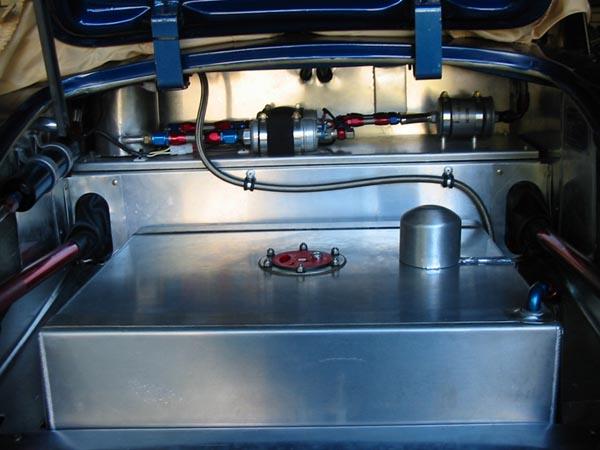You may have seen the disastrous effects of the Cobra that flipped over in the US, dislodging the fuel filler cap and the resulting inferno.
or...
You just might choose to run a fabricated fuel cell with the flush mounted fuel filler cap:

I'm thinking about the legality of such tanks/cells in Australia. In reading the General Requirements for fuel tanks according to the current national code of practice standards, it says the following:
The fuel filler inlet and cap should be located outside of the vehicle. Where an inlet is located inside a vehicle, it must not be inside the passenger compartment and the inlet must be separately sealed from the rest of the vehicle to ensure fumes do not enter the passenger cabin and that provisions are made to ensure any fuel spills are localised and drain outside the vehicle.
Would you think I'm correct in interpreting that as.....
Where an inlet is located inside the vehicle
(ie: in the boot), it must not be inside the passenger compartment
(it's not) and the inlet must be separately sealed from the rest of the vehicle
(the bootlid and the panel between the boot and the back of the seats - what some refer to as the boot firewall - seals this area from the rest of the vehicle) to ensure fumes do not enter the passenger cabin.
I'm keen to hear if approving engineers have had anything to say about this for those who may wish to use a race-spec fuel cell or bladder.